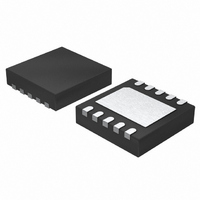LTC2611CDD Linear Technology, LTC2611CDD Datasheet - Page 12

LTC2611CDD
Manufacturer Part Number
LTC2611CDD
Description
IC DAC 14BIT SGL R-R VOUT 10DFN
Manufacturer
Linear Technology
Datasheet
1.LTC2621CDDPBF.pdf
(16 pages)
Specifications of LTC2611CDD
Settling Time
9µs
Number Of Bits
14
Data Interface
Serial
Number Of Converters
1
Voltage Supply Source
Single Supply
Power Dissipation (max)
1.88mW
Operating Temperature
0°C ~ 70°C
Mounting Type
Surface Mount
Package / Case
10-DFN
Lead Free Status / RoHS Status
Contains lead / RoHS non-compliant
Available stocks
Company
Part Number
Manufacturer
Quantity
Price
Company:
Part Number:
LTC2611CDD
Manufacturer:
LT
Quantity:
10 000
Part Number:
LTC2611CDD
Manufacturer:
LTNEAR
Quantity:
20 000
Company:
Part Number:
LTC2611CDD-1
Manufacturer:
LT
Quantity:
10 000
Company:
Part Number:
LTC2611CDD-1#PBF
Manufacturer:
Linear Technology
Quantity:
135
LTC2601/LTC2611/LTC2621
OPERATION
INPUT WORD (LTC2601)
INPUT WORD (LTC2611)
INPUT WORD (LTC2621)
next device in the chain. The shift registers of the devices
are thus connected in series, effectively forming a single
input shift register which extends through the entire
chain. Because of this, the devices can be addressed and
controlled individually by simply concatenating their input
words; the fi rst instruction addresses the last device in
the chain and so forth. The SCK and CS/LD signals are
common to all devices in the series.
In use, CS/LD is fi rst taken low. Then the concatenated
input data is transferred to the chain, using SDI of the
fi rst device as the data input. When the data transfer is
complete, CS/LD is taken high, which executes the com-
mands specifi ed for each of the devices simultaneously. A
single device can be controlled by using the no-operation
command (1111) for the other devices in the chain.
Power-Down Mode
For power-constrained applications, power-down mode
can be used to reduce the supply current whenever the
DAC output is not needed. When in power-down, the buffer
amplifi er, bias circuit and reference input is disabled and
draws essentially zero current. The DAC output is put into a
high impedance state, and the output pin is passively pulled
to ground through 90k resistors. Input- and DAC-register
contents are not disturbed during power-down.
The DAC can be put into power-down mode by using
12
C3
C3
C3
COMMAND
COMMAND
COMMAND
C2
C2
C2
C1 C0
C1 C0
C1 C0
DON’T CARE BITS
DON’T CARE BITS
DON’T CARE BITS
X
X
X
X
X
X
X
X
X
X
X
X
MSB
MSB
MSB
D15
D13 D12 D11 D10 D9 D8 D7 D6 D5 D4 D3 D2
D11 D10 D9 D8 D7 D6 D5 D4 D3 D2
D14
D13
D12 D11 D10 D9 D8 D7 D6 D5 D4 D3 D2
DATA (14 BITS + 2 DON’T CARE BITS)
DATA (12 BITS + 4 DON’T CARE BITS)
command 0100
supply and reference currents are reduced to almost zero
when the DAC is powered down; the effective resistance at
REF rises accordingly becoming a high impedance input
(typically > 1GΩ).
Normal operation can be resumed by executing any com-
mand which includes a DAC update, as shown in Table 1 or
performing an asynchronous update (LDAC) as described
in the next section. The DAC is powered up as its voltage
output is updated. When the DAC in powered-down state
is powered up and updated, normal settling is delayed. The
main bias generation circuit block has been automatically
shut down in addition to the DAC amplifi er and reference
input and so the power up delay time is 12μs (for V
5V) or 30μs (for V
Asynchronous DAC Update Using LDAC
In addition to the update commands shown in Table 1,
the LDAC pin asynchronously updates the DAC register
with the contents of the input register.
If CS/LD is high, a low on the LDAC pin causes the DAC
register to be updated with the contents of the input
register.
If CS/LD is low, a low going pulse on the LDAC pin before
the rising edge of CS/LD powers up the DAC but does not
cause the output to be updated. If LDAC remains low after
DATA (16 BITS)
b
. The 16-bit data word is ignored. The
CC
= 3V).
D1 D0
LSB
D1 D0
X
LSB
X
D1 D0
X
X
2601 TBL01
2601 TBL02
2601 TBL03
LSB
X
X
CC
2601fb
=









